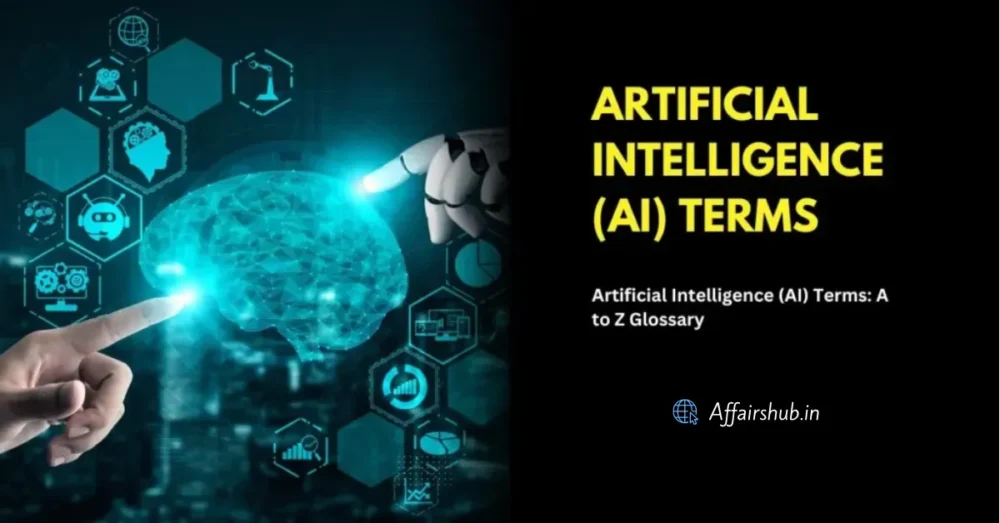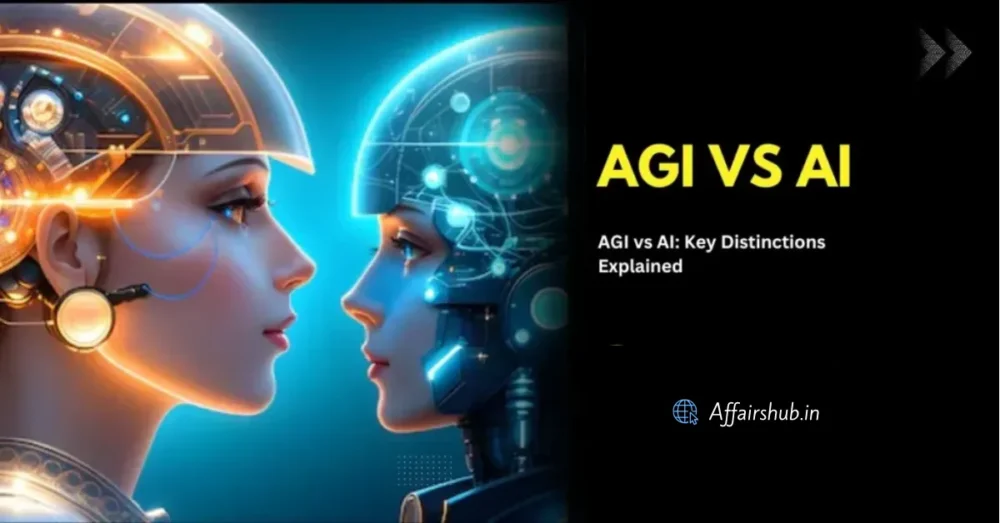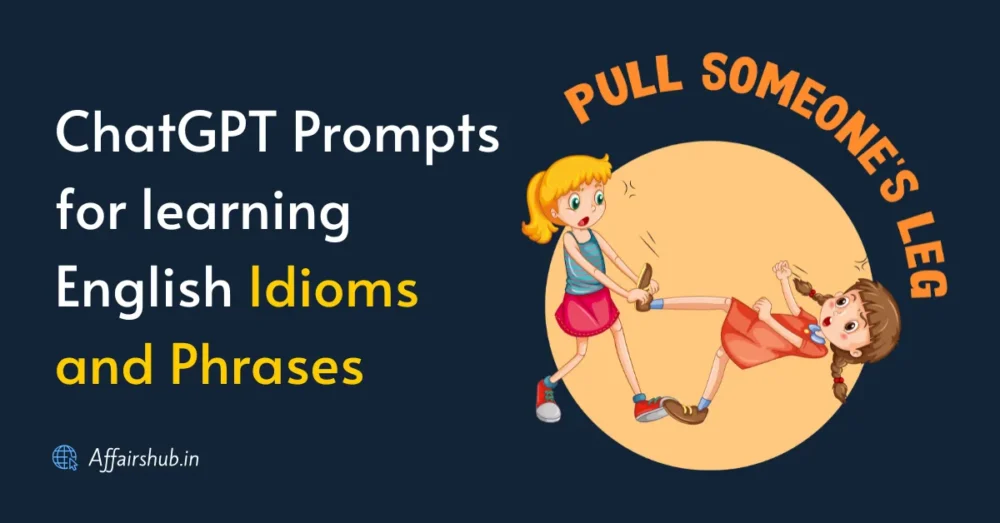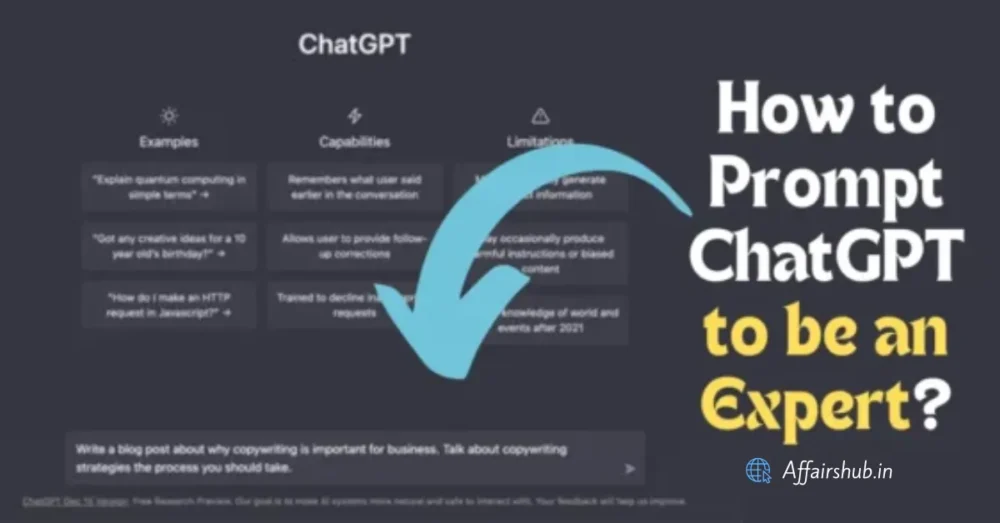The growth of artificial intelligence has introduced amazing tools for creativity, and one of the coolest is ChatGPT. This AI language tool can write interesting stories, but to get great results, you need to know how to give it the right instructions. Whether you’re a budding writer or just want to have fun, learning how to guide ChatGPT can help it create even better stories.
Understanding ChatGPT
What is ChatGPT?
ChatGPT is a smart language tool created by OpenAI. It uses machine learning to create text that sounds like it was written by a person. ChatGPT can help with many tasks, like answering questions, writing essays, or even creating stories.
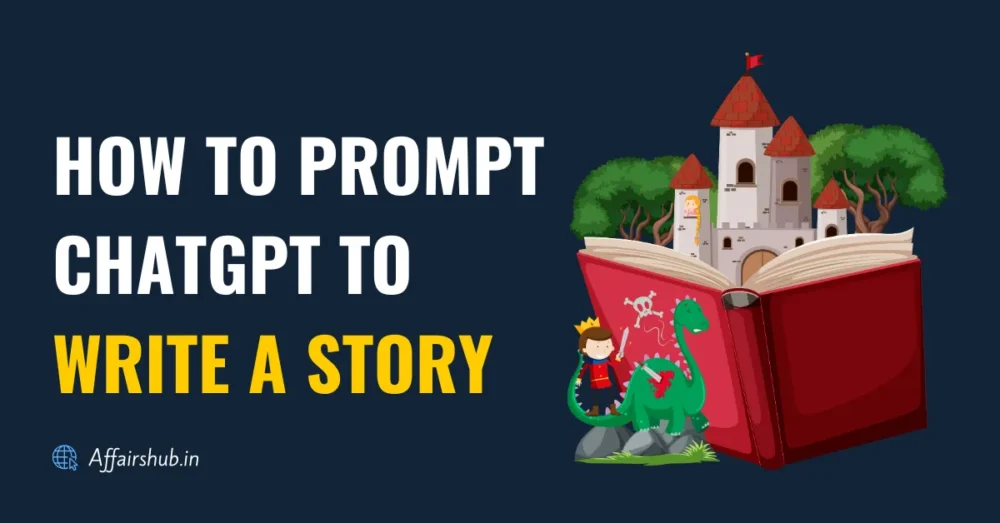
How does ChatGPT generate text?
ChatGPT works by guessing the next word in a sentence based on the information you give it. It has been trained on a wide variety of internet text, which helps it create clear and meaningful replies.
✅ Read More: How to Use ChatGPT: A Definitive Guide for Students
Setting Up Your Story Idea
Brainstorming story concepts
Before using ChatGPT, take a moment to plan your story idea. Think about the type of story you want to create. Is it a mystery, a romance, or a sci-fi adventure? Having a clear idea will help you write better prompts and get the best results.
Defining the genre and tone
Decide on the genre and tone of your story. Do you want it to be dark and suspenseful, or fun and light-hearted? Clearly choosing these details will help ChatGPT create a story that matches your idea.
Creating an Engaging Plot
The Importance of a Solid Plot
A plot is like the roadmap of a story. It outlines the sequence of events that drive the narrative forward. Without a well-constructed plot, a story can feel aimless or confusing. Here are some key points about why a strong plot matters:
- Engagement: A compelling plot keeps readers hooked. It creates suspense, anticipation, and emotional investment. Readers want to know what happens next!
- Character Development: The plot challenges characters, forcing them to grow, change, or face obstacles. This development makes characters relatable and interesting.
- Conflict: A plot revolves around conflict. Conflict drives the story’s momentum, whether it’s a personal struggle, an external threat, or a mystery to solve.
Structuring Your Plot Outline
Before diving into writing, consider outlining your plot. Here’s a simple way to structure it:
Introduction (Beginning)
- Introduce the main character(s) and the setting.
- Set the tone and establish the story’s context.
- Hint at the central conflict.
Rising Action (Middle)
- Introduce complications and obstacles.
- Build tension as the conflict intensifies.
- Characters make choices that impact the outcome.
Climax
- The turning point! The most intense moment.
- The main character faces the central conflict head-on.
- Decisions made here shape the resolution.
Falling Action
- Consequences unfold.
- Loose ends are tied up.
- Characters reflect on their journey.
Resolution (End)
- The story concludes.
- The conflict is resolved (or not).
- Characters’ arcs find closure.
Example: “The Mysterious Locket”
Beginning: Lily discovers an old locket in her grandmother’s attic. It’s locked, and the key is missing. She becomes obsessed with unlocking its secrets.
Middle: Lily investigates her family history, unearthing tales of lost love and betrayal. She meets an enigmatic stranger who claims to know the locket’s origin. But he wants something in return.
Climax: Lily confronts the stranger at an abandoned mansion. The locket’s secret is revealed: it contains a map to hidden treasure. But the stranger double-crosses her, leading to a dangerous chase.
Falling Action: Lily deciphers the map, facing traps and puzzles. She learns about her ancestors’ sacrifices. Meanwhile, the stranger’s true motives emerge.
Resolution: Lily unlocks the locket, finding not just treasure but a letter from her long-lost grandmother. She realizes family bonds matter more than gold.
Remember, a plot can be simple or complex, but it should keep readers engaged. Feel free to adapt this example or create your own thrilling plot!
✅ Read More: How to Prompt ChatGPT to Summarize a Book?
Crafting memorable characters
Characters are the heart of any story. Create characters that are unique and relatable. Think about their backgrounds, motivations, and how they interact with each other.
Unique Personalities
- Lily: Our protagonist, Lily, is an introverted artist who finds solace in her grandmother’s attic. She’s curious, observant, and yearns for adventure.
- Ezra (the Enigmatic Stranger): Ezra wears a tattered leather jacket and has piercing blue eyes. He’s mysterious, aloof, and harbors a hidden agenda.
Physical Appearances
- Lily: She has wild, unruly curls that frame her face. Her eyes are the color of storm clouds, and she wears oversized sweaters.
- Ezra: His angular features hint at a troubled past. His hands bear scars from countless adventures.
Backgrounds and Motivations
- Lily: She grew up listening to her grandmother’s stories about lost treasures and family secrets. Lily’s motivation is to uncover the truth behind the locket.
- Ezra: A former archaeologist, Ezra seeks redemption for a past mistake. The locket holds the key to his redemption.
Interactions
- Lily and Ezra: Their interactions are tense at first—Lily suspects Ezra’s intentions. As they decode clues together, their dynamic shifts from suspicion to reluctant partnership.
Example Dialogue
Scene: Abandoned Mansion
Lily: “Why are you really here, Ezra?”
Ezra: “The locket contains answers, Lily. Answers that could change everything.”
Lily: “And what do you want in return?”
Ezra: “Redemption. Closure. Maybe even forgiveness.”
Remember, these character details will shape their actions, dialogue, and growth throughout your story.
Providing character details to ChatGPT
When prompting ChatGPT, include detailed descriptions of your characters. Mention their personalities, physical appearances, and any relevant background information. This helps ChatGPT generate consistent and compelling character interactions.
Example Story: “The Mysterious Locket”
Lily (Protagonist)
- Personality: Lily is an introverted artist who finds solace in her grandmother’s attic. She’s curious, observant, and yearns for adventure.
- Physical Appearance: She has wild, unruly curls that frame her face. Her eyes are the color of storm clouds, and she often wears oversized sweaters.
- Background and Motivation: Growing up, Lily listened to her grandmother’s stories about lost treasures and family secrets. Her motivation is to uncover the truth behind the mysterious locket.
Ezra (the Enigmatic Stranger)
- Personality: Ezra is mysterious and aloof. He wears a tattered leather jacket and has piercing blue eyes. His past is shrouded in secrets.
- Physical Appearance: His angular features hint at a troubled history. His hands bear scars from countless adventures.
- Background and Motivation: A former archaeologist, Ezra seeks redemption for a past mistake. The locket holds the key to his salvation.
Character Interaction
- Initially, Lily suspects Ezra’s intentions. As they decode clues together, their dynamic shifts from suspicion to a reluctant partnership. Dialogue between them reveals their conflicting motivations and hidden agendas.
Establishing the Setting
Descriptive Immersion
A well-crafted setting transports readers into the world of your story. Consider the following elements:
- Visual Details: Describe the physical surroundings—the landscape, architecture, weather, and lighting. Is it a misty forest, a bustling marketplace, or a crumbling castle?
- Sensory Details: Engage readers’ senses. What do they smell, hear, taste, and touch? The scent of pine needles, distant laughter, or the rough texture of ancient stone walls can evoke powerful imagery.
- Time Period: Is your story set in the past, present, or future? Historical context or futuristic technology can shape the atmosphere.
Mood and Atmosphere
The setting influences the story’s mood:
- Eerie: A fog-shrouded graveyard creates suspense.
- Idyllic: A sun-drenched meadow sets a peaceful tone.
- Industrial: A gritty cityscape suggests hustle and bustle.
Impact on Events
- Conflict: Settings can create or intensify conflict. A claustrophobic submarine or a remote island during a storm amplifies tension.
- Symbolism: Settings can symbolize themes. A decaying mansion mirrors the characters’ inner struggles.
Example: “The Forgotten Lighthouse”
Setting: A desolate coastal town with cliffs and crashing waves.
Mood: Melancholic, mysterious.
Impact: The abandoned lighthouse becomes a symbol of lost hope. Its flickering beam guides no ships—only memories.
Remember, your setting is more than a backdrop; it’s a character in itself. Craft it with care!
Writing the Introduction
Capturing the reader’s attention
The introduction sets the tone for your story and hooks the reader. Start with something intriguing or unexpected to draw them in.
Setting the stage for the story
Use the introduction to establish the main characters, the setting, and the initial conflict or situation. This sets up the rest of the story.
Guiding ChatGPT with Detailed Prompts
Anatomy of a Good Prompt
A well-constructed prompt ensures that ChatGPT generates relevant and engaging text. Here’s what makes a good prompt:
- Clarity: Be concise and specific. Clearly state what you want ChatGPT to create (e.g., a scene, dialogue, or description).
- Character Details: Include information about characters—personalities, appearances, and backgrounds. This helps ChatGPT maintain consistency.
- Setting: Describe the environment where the action takes place. Is it a bustling city, a quiet village, or an otherworldly realm?
- Plot Points: If relevant, mention key plot elements. Are there mysteries to solve, conflicts to resolve, or secrets to uncover?
Effective Prompt Examples
Mystery Novel Opening Scene
Prompt: “Write an opening scene for a mystery novel set in a small coastal town, where a detective finds an unusual clue on the beach.”
Result: Detective Harper squinted against the salty breeze as she stepped onto the rocky shore. The sun dipped below the horizon, casting long shadows. There, half-buried in the sand, lay a tarnished pocket watch—a relic from another era. Its hands pointed to an impossible time. The mystery had begun.
Superpower Discovery Dialogue
Prompt: “Describe a conversation between two friends who discover they have superpowers.”
Result: Alex’s eyes widened as sparks danced around their fingertips. “Did you see that?” Emma laughed nervously. “Yeah, I accidentally melted my coffee cup this morning.” “Telekinesis?” Alex asked. “And you?” “Invisibility,” Alex whispered. “We’re like a low-budget superhero duo.”
Incorporating Dialogue
Natural Dialogue Tips
Creating authentic dialogue is crucial for engaging storytelling. Here are some tips:
- Contractions: People rarely speak in formal, stilted language. Use contractions (e.g., “I’m,” “don’t,” “won’t”) to make dialogue flow naturally.
- Slang and Idioms: Consider the characters’ backgrounds. A teenager might say, “That’s lit!” while an elderly professor prefers, “Remarkable!”
- Varied Sentence Lengths: Mix short and long sentences. Real conversations have rhythm.
Dialogue Prompts
Teacher-Student Discovery
Prompt:
- “Write a dialogue between a teacher and a student discussing a surprising discovery.”
Result:
- Teacher (Ms. Adams): “Alex, have a seat. I stumbled upon something fascinating in the library archives.”
- Student (Alex): “What is it, Ms. Adams?”
- Teacher: “An ancient map—hidden tunnels beneath the school. Imagine the secrets!”
- Student: “Secret tunnels? Like, Hogwarts-style?”
- Teacher: “More like dusty passages, but who knows what we’ll find?”
Fantasy Kingdom Truce
Prompt:
- “Create a conversation between two rivals in a fantasy kingdom, negotiating a temporary truce.”
Result:
- Rival 1 (Sir Cedric): “Princess Elara, our armies clash tomorrow. But perhaps a truce?”
- Rival 2 (Princess Elara): “Truce? After years of bloodshed?”
- Sir Cedric: “A ceasefire. Just until we decipher the ancient prophecy.”
- Princess Elara: “Agreed. But no tricks, Sir Cedric.”
- Sir Cedric: “No tricks, Princess. For now.”
Building Suspense and Conflict
Creating tension in the story
Suspense keeps readers on the edge of their seats. Introduce conflicts and obstacles that challenge the characters and drive the plot forward.
Using prompts to introduce conflict
- “Describe a scene where the protagonist faces a moral dilemma.”
- “Write a confrontation between the hero and the antagonist, where their true motives are revealed.”
Advancing the Plot
Keeping the story moving
Avoid letting the story stagnate by introducing new developments and challenges. This keeps the narrative dynamic and engaging.
Transition prompts
- “Describe the protagonist’s journey to a new location and what they encounter along the way.”
- “Write a scene where the characters discover a crucial piece of information that changes their course of action.”
Crafting the Climax
Reaching the story’s peak
The climax is the most intense part of the story, where the main conflict reaches its peak. Make it exciting and emotionally charged.
Prompts for climax scenes
- “Write the final battle between the hero and the villain, where the hero must overcome their greatest fear.”
- “Describe a moment of revelation where the protagonist discovers a hidden truth about themselves.”
Resolving the Story
Bringing the story to a satisfying conclusion
A good ending ties up loose ends and provides closure. It should feel earned and consistent with the rest of the story.
Ending prompts
- “Write an epilogue where the characters reflect on their journey and how they have changed.”
- “Describe the resolution of the main conflict and the protagonist’s new normal.”
Editing and Refining the Output
Reviewing the generated text
Once ChatGPT has generated your story, review it carefully. Look for any inconsistencies, awkward phrasing, or areas that need more detail.
Making adjustments for coherence
Edit the text to ensure it flows smoothly and makes sense. You might need to add transitions, clarify descriptions, or refine dialogue.
Conclusion
Prompting ChatGPT to write a story is an art that combines creativity with clear communication. By providing detailed and thoughtful prompts, you can guide the AI to produce engaging and coherent stories. Don’t be afraid to experiment and refine your prompts to get the best results. Happy storytelling!
FAQs
If you’re stuck, try prompting ChatGPT with specific scenes or character interactions. This can help spark new ideas and move the story forward.
Yes, ChatGPT can write in various genres, from fantasy and science fiction to romance and mystery. Just specify the genre in your prompts.
If the story lacks coherence, provide more detailed prompts and review the generated text carefully. You can edit the output to improve consistency and flow.
Give detailed descriptions of your characters’ backgrounds, motivations, and personalities. Include prompts that explore their thoughts and feelings.
Absolutely! Provide the existing text and prompt ChatGPT to continue from where you left off, ensuring you include details about the current plot and characters.
Related Posts:


